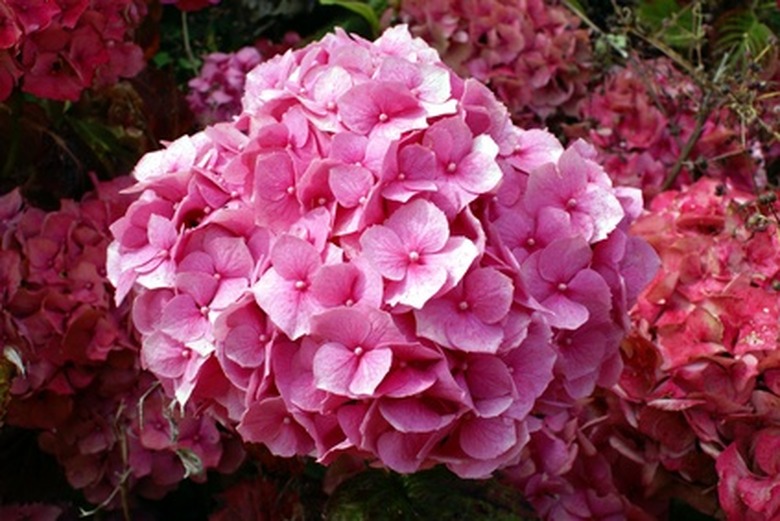How Long Does A Hydrangea Shrub Live?
Hydrangeas, originally from China and Japan, come in a wide variety of sizes and types. Some dwarf versions reach only 18 inches tall while the very few that are climbers can reach 50 feet in height. Hydrangeas are favored for their bushy-headed and long-lasting blooms, which come in white, pink, purple, red and blue. Though they require minimal care, the life expectancy of a hydrangea can fluctuate with care and environmental conditions. It is not unusual for these plants to reach the age of 50, if given proper care.
Soil
Hydrangeas can grow in a wide variety of soil types, though they perform best in moist but well-drained soil. Like most plants, hydrangeas do not like to have soggy roots. Avoid dry soil where water is not readily available. Hydrangeas can tolerate a wide range of pH levels. Low levels of 5.5 or less can alter the color to blue in many varieties, though it will not have any effect on the plant's life span.
- Hydrangeas, originally from China and Japan, come in a wide variety of sizes and types.
- Hydrangeas can grow in a wide variety of soil types, though they perform best in moist but well-drained soil.
Pests
Adding to the long life of the hydrangea shrub is the fact that they are resistant to most insects and diseases. This does not mean they are completely unaffected, but with a little tender loving care, most problems can be avoided. Aphids, scale, spider mites and rose chafer are among the insects that can attack hydrangeas but seldom cause serious problems for them. Insecticidal soap and water will wash these pests away. Leaf spot, powdery mildew and rust are occasional diseases that can affect hydrangeas. General purpose fungicides should take care of any of these problems.
Light and Water
Hydrangeas prefer morning sun and afternoon shade. They can tolerate full sun, but if located in a particularly windy spot, may lose moisture causing the leaves to wilt. Exposure to too much sun can bleach and scorch the flowers. Hydrangeas need watering on a regular basis and during dry periods, deep watering. Providing the proper sun and water amounts will help insure the hydrangea lives to its full life expectancy.
- Adding to the long life of the hydrangea shrub is the fact that they are resistant to most insects and diseases.
Fertilizer
If soil conditions provide ample natural nutrients for hydrangeas, no fertilizer should be needed. However, if soil conditions are unsatisfactory, a soil test can reveal deficiencies. Recommendations can also be made regarding amendments including fertilizers, which will give the hydrangea the best chance of reaching its 50th birthday.
Other Risks
One risk hydrangeas may face in reaching old age depends upon their location and the proximity of deer. Deer favor the soft green leaves and young buds and will strip a bush of its leaves and blossoms in very little time. Special cages, similar to tomato cages but larger, can be used to help keep deer away from hydrangea bushes and extend their life.
